"Son Of Pismo" Finally Realized With July '05 14" iBook?
by Charles W. Moore
After the PowerBook 2000 Pismo was discontinued in January, 2001 at the introduction of the first Titanium PowerBooks, a persistent rumor developed that Apple was at work on a "mid-range" G3 PowerBook with the tried-and-true 14.1" 1024 x 768 display that graced all three G3 Series PowerBook models. This vaporous machine was popularly referred to as "Son Of Pismo."
In early 2001, Apple had two laptop families with four separate variants — the new Titanium PowerBook G4 in 400 MHz and 500 MHz versions, and the clamshell iBook G3 in 366MHz and 466 MHz speeds. In May of that year the range narrowed further, with the new dual-USB iBook coming with 500 MHz G3 power across the board, although with four optical drive configuration options.
Nevertheless, "Son of Pismo" speculation continued throughout 2001, and at Macworld Expo San Francisco in January, 2002, it was revealed that there actually had been a new 14.1" laptop under development. However, the "middle-sized" machine that Steve Jobs unveiled wasn't a PowerBook, but rather a "stretch" dual-USB iBook, with a Pismo-sized screen in a larger version of the 12" iBook's case, as well as pretty much the same set of features and connectivity options as its smaller sibling.
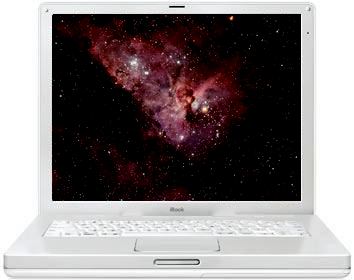
So, did the 14" iBook really qualify as a true "Son Of Pismo?"
Performance-wise, the two machines were pretty evenly-matched. The Pismo's 500 MHz G3 with 1 MB of backside cache would run pretty much neck-and-neck with the iBook's 600 MHz G3 and 256k of on-chip cache in most instances, so the speed issue was a wash. In May, 2002, the 14" iBook got a 700 MHz G3 processor with 512k of L2 cache, a cache configuration that has stayed constant through the current G4 iBooks. Today, the 14" iBook with its 1.42 GHz G4 processor, 142 MHz system bus, and 32 MB of video RAM on a RADEON 9550 graphics accelerator card blows a hotrodded Pismo with a 550 MHz G4 or 900 MHz G3 processor upgrade into the weeds.
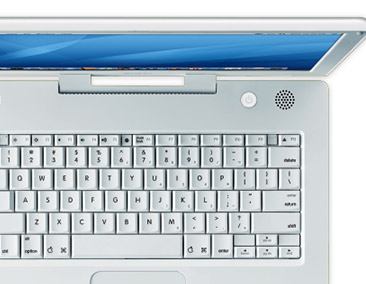
Returning to the original 14" iBook, its display was pretty much identical to the Pismo's, as was the ATI Rage Mobility 128 graphics accelerator with 8 MB of VRAM in both 'Books. Both had 100 MHz System buses and 56k internal modems. Both the iBook, and the late production 500 MHz Pismo came with 20 MB hard drives. Both had full-size keyboards of similar layout, although the Pismo's is more robust with a lot better feel. Pismo's trackpad also had a better reputation (deserved) than the one in the iBook. The Pismo had two FireWire reports to the iBook's one, but they both connected to a single internal FireWire bus, and the iBook boasted substantially faster FireWire throughput than the Pismo. A fairly even saw-off here depending on your priorities, but with a probable slight advantage to the iBook.
Both units had two USB ports and a 10/100 Ethernet port. However, the iBook had its funky AV and RGB video output ports, while Pismo has a conventional VGA video port (which unlike the iBook doesn't require an adapter to connect to a standard VGA monitor), and an S-video port for output to TVs and projectors. Pismo has a real, analog sound-in port, while the iBook requires USB audio input, a definite Pismo advantage in my estimation at the time, although less so these days with better availability of USB sound input devices.
Then were other things the Pismo had which are not available at all on the iBook, like a removable module expansion bay, a PC Card slot, and an infrared port. The Pismo had two RAM slots that will support memory upgrades, while the iBook only had one. With its processor mounted on a removable daughtercard, the Pismo was processor upgradable, while the iBook is not. The iBook would run longer on a battery charge with its battery than the Pismo, but the latter had the advantage of being able to pack a second battery in its expansion bay.
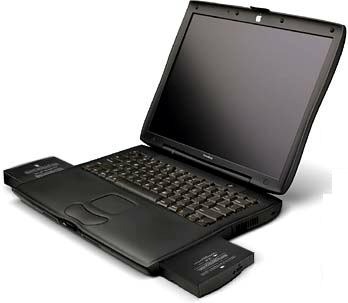
Moving out of a straight hardware spec. comparison, the two machines have very different styling. Personally, while I find my Pismo attractive, I love the looks of the 12" iBook. However, I've always found the looks of the 14" dual-USB iBook less than captivating. It's the same dynamic that obtained when Apple stretched the PowerBook 5300/190 case to accommodate an internal CD-ROM drive module and a 12/1" screen for the PowerBook 3400. The 3400 was a vastly better computer than the 5300, but the styling that had been so fetching (at least I found it so) in its original dimensions looked awkward and ungainly in the larger version.
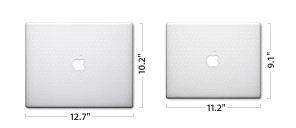
The 14" iBook has sold well enough that Apple has kept making it longer than any other of their portable models in history, save for the 12 inch version. It has been built in 600 MHz, 700 MHz, 800 MHz, and 900 MHz G3 versions, and 933 MHz, 1 GHz, 1.2 GHz, 1.33 GHz, and 1.42 GHz clock speeds over its more than three and a half year production run (and counting).
And it just got a new lease on life that arguably helps it fill the Pismo's proverbial boots more convincingly than ever before. As lovable as the Pismo is, the design is more than half a decade old — an epoch in computer chronology. It's testimony to the superb goodness of the PowerBook G3 design that the Pismo continues to be in substantial demand on the used market, and people (like me) who already have one are inclined to hang on to them. With its 550 MHz G4 upgrade, a larger capacity hard drive, more RAM and a SuperDrive module, my old Pismo still acquits itself very well, but it's really outclassed now by even the least expensive new iBooks.
A shortcoming in the "Son of Pismo" idea initially was that while its performance was similar, the iBook, as previously noted, just didn't match the Pismo PowerBook's feature set, but the fact is that neither do the current PowerBooks in some respects, such as the lack of a removable device expansion bay, or even a PCcard slot in the case of the 12" PowerBook. But now, in other respects, the iBook is a much more desirable machine than the old Pismo, and I wouldn't have to think twice about which I would pick were one offered to me new. The fact that you could buy almost three 14" iBooks (with the combo drive delete option at $1,199) for what my Pismo cost new doesn't hurt either.
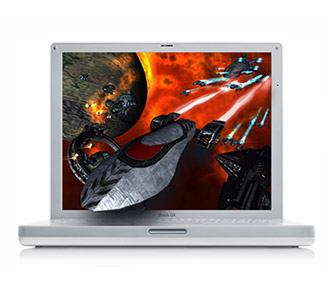
With its 1.42 GHz processor; 512 megabytes of standard RAM across the board; a Radeon 9550 graphics processor that supports Core Image in OS 10.4; scrolling trackpads and sudden motion sensors, Airport Extreme and Bluetooth support, a 60 GB hard drive upgradable to 80 or 100 GB, and a SuperDrive, the 14" iBook is now loaded with what was high-end PowerBook stuff, or not even available, only months ago. It represents the most power and features for the money ever offered in an Apple laptop.
By now it's more like "grandson of Pismo," but it's a worthy successor with no excuses necessary. And it will even fit nicely in my Pismo backpack case.